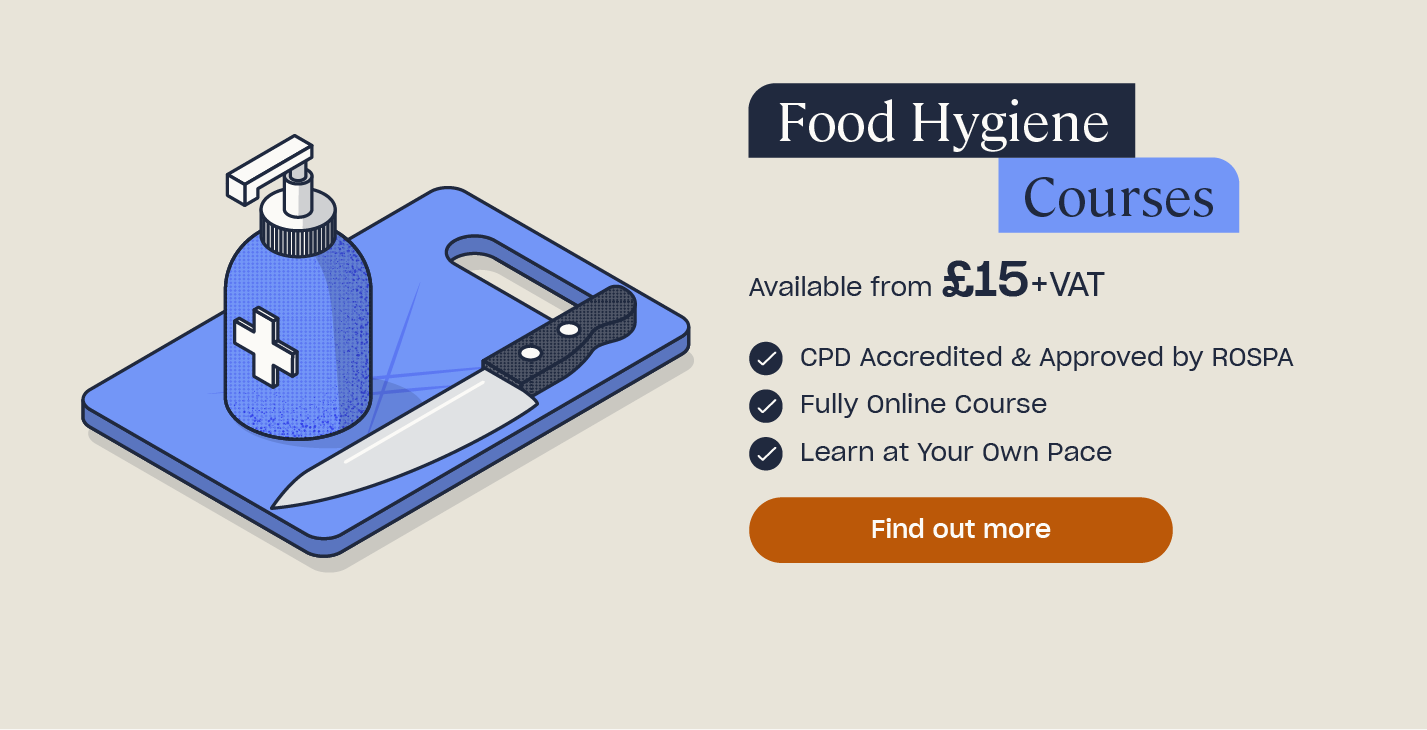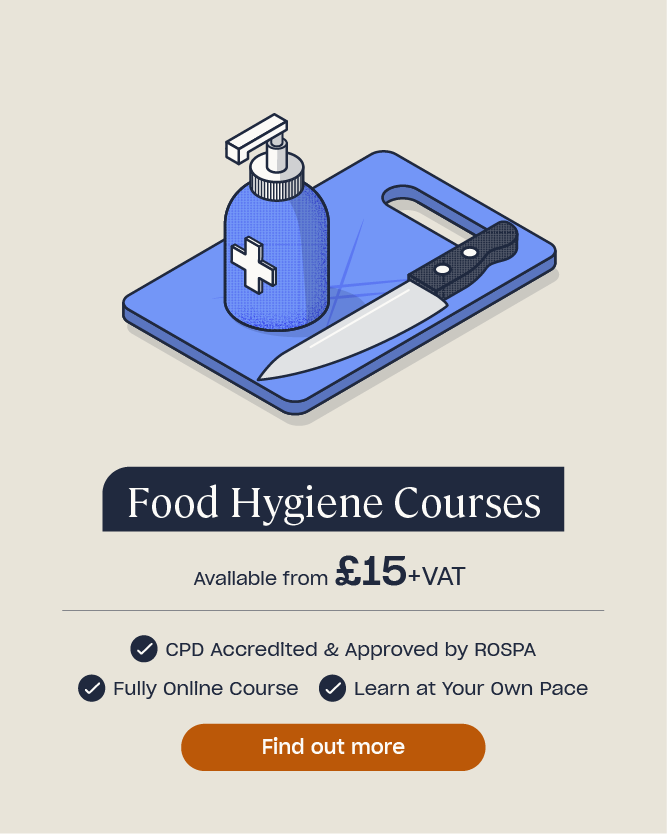How to Clean an Oven
Everyone owns and uses an oven – whether it’s at home in a domestic kitchen or at work in a commercial kitchen, such as a cafe, restaurant or takeaway – and we should all ensure we’re following best practice in order to maintain food safety whilst we’re cooking. In this article, we’ll cover the importance of cleaning your oven, explain how often your oven should be cleaned, detail the best methods for cleaning your oven and give you some extra cleaning hacks to make the task a bit easier.
Importance of Cleaning your Oven
Many of us put off cleaning the oven because it can be a messy, time-consuming task. However, a dirty oven – whether it’s in a cafe, restaurant or just at home – doesn’t just make food taste unpleasant. If it’s not kept clean, your oven can be unsafe to use, will need more energy to operate and can be a potential food contamination hazard.
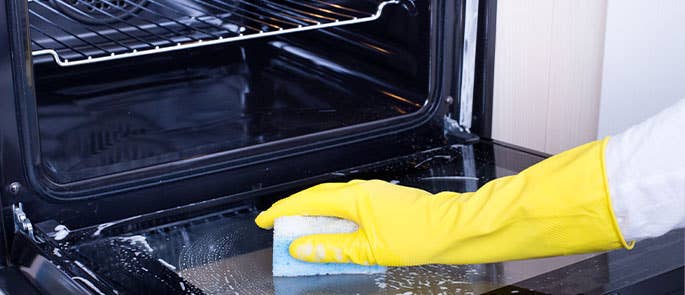
It’s important to clean your oven because it:
- Makes food taste better.
- Lowers the risk of food poisoning.
- Improves food hygiene and safety.
- Increases your business’s chances of achieving a high Food Hygiene Rating.
- Helps to prevent cross contact and stops food allergens from being transferred from dirty oven racks/trays to food.
- Mitigates other health concerns, such as inhaling smoke from burnt-on food residue.
- Prevents fire hazards.
- Enables the appliance to work more efficiently, therefore reducing energy consumption and operating costs.
How Often Should you Clean your Oven?
It’s recommended that you clean your oven at home at least every six months. If you use your oven daily then it may need cleaning more often, such as every month to three months, and if you use it infrequently (perhaps you have an air fryer instead), then you may only need to clean your oven once a year.
For commercial kitchens, ovens should be cleaned much more regularly, as clean appliances are vital for food hygiene and safety. Depending on your type of food business, you may want to clean your oven on a daily basis, every week or every month. If you’re subject to an inspection visit from an EHO, then they’ll be checking how clean your ovens are and documenting what they find, so cleanliness is vital.
For most at-home ovens, a quick wipe-down after every use is enough to keep the oven clean and operating efficiently. A deeper clean can then be done every few months. Signs your oven needs cleaning include:
- Lingering food smells.
- Food cooking unevenly.
- Oven doors or shelves feeling sticky.
- Not being able to see through the oven door.
- The oven losing heat.
- The oven taking a long time to get up to temperature.
- The oven smoking when turned on.
Best Way to Clean an Oven
There are various ways to clean an oven, whether you choose to use chemical cleaning products from the supermarket or more natural products, such as bicarbonate of soda, vinegar and lemon juice.
Chemical oven cleaners can be highly effective and are often the best way to clean an oven, especially one with lots of burnt-on grease, but they do come with safety hazards. Always follow the manufacturer’s instructions when using chemical cleaners in order to protect your health and prevent the introduction of chemical hazards in your food.
Natural oven cleaners can be just as effective as chemical products and are often half the price. Making a simple baking soda paste and then spraying the oven with vinegar or lemon juice can remove burnt-on foods without causing health and safety hazards.
If you have a self-cleaning oven, then you can run the self-cleaning setting every few months to help keep on top of your oven cleaning. This setting works by burning off any food or grease inside the oven at a very high temperature. When the oven has cooled down, you then simply wipe away the mess with a clean cloth, without the need to scrub.
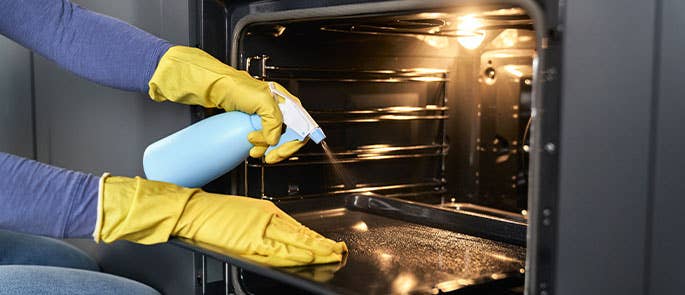
How to Degrease an Oven
Food splatter, cooking oils and greasy food products all leave sticky residue behind in your oven as they bake which can easily build-up and burn-on to your oven walls, door and shelves over time.
The best way to degrease an oven is with very hot water and a cleaning agent, as these will help to soften and dissolve tough grease, making it much easier to remove. Some methods for degreasing an oven include:
- Fill a heat-safe bowl with water and half a lemon, then place inside your oven. Heat the oven to 200°C and leave the water to steam inside for about half an hour. Turn the oven off, leave it to cool, then wipe away the grease with a clean, damp cloth.
- Fill a heat-safe bowl with water and put two dishwasher tablets in it. Heat the oven to a low temperature, about 140-160°C, and leave the water to steam inside for about an hour. Turn the oven off, leave it to cool, then wipe away the grease with a clean, damp cloth.
- Line the sink with aluminium foil and fill it with hot water and two dishwasher tablets. Leave the tablets to dissolve for a few minutes, then submerge your oven racks and trays in the water and leave to soak for a few hours, even overnight. Drain the water and wipe away any remaining grease with a clean, damp cloth.
How to Clean Oven Racks
Oven racks and shelves can get very greasy from food and oil splashes and sometimes come into direct contact with foods whilst they’re cooking.
If your oven racks are dishwasher safe, then you can simply put them on the bottom rack of the dishwasher and clean them on a high-temperature cycle to remove grease and grime.
Alternatively, soak your oven racks in the sink or the bath overnight: line the sink/bath with some aluminium foil, then fill it with hot water and a couple of dishwasher tablets or a scoop of biological washing powder. Put the oven racks in the solution and leave to soak overnight, then simply wipe away the dirt with a clean cloth in the morning.
How to Clean an Oven Door
If you haven’t cleaned the oven for a while, then it’s likely that the oven door is covered in baked-on grease and food residue. You may not even be able to see through the oven door anymore and it might feel sticky to the touch. If this sounds familiar, then it’s probably time to clean the glass in the oven door.
To clean an oven door easily, try using a natural cleaner made of bicarbonate of soda and water: mix two tablespoons of bicarb and one of water to create a paste, then apply this thickly to the oven door glass and leave to work for half an hour. Then, wipe the paste off with a clean, damp cloth. For stubborn dirt, use a glass scraper or blade to chip off the dirt without scratching the glass.
How to Clean the Bottom of an Oven
The bottom of an oven can often be the dirtiest and hardest part to clean, especially if it has months (or years) of grease build-up that’s been burnt onto the oven floor in layers each time the oven is used.
To clean the bottom of an oven easily, either:
- Spray the whole surface with an oven cleaning chemical and leave to work for as long as the instructions on the cleaning chemical state, often 15-30 minutes. Then, wearing protective gloves, wipe away the cleaner and any dirt that comes away with it using a clean, damp cloth. A scraper or blade can be used to remove any stubborn dirt.
- Cover the surface with a baking powder and water paste mix and leave it to work all day or overnight if possible. Next, spray the mixture with vinegar or lemon juice and wait for it to foam up for a few minutes, then wipe away the solution with a clean, damp cloth. Use a scraper or blade to remove any stubborn dirt.
How to Clean the Inside of an Oven
All parts inside an oven can be cleaned aside from the heating element at the back. Once you’ve cleaned the oven door, racks and floor, don’t forget to pay attention to the back of the oven, the oven walls and the parts that hold the shelves in place. All of these areas become dirty and can affect the safety and efficiency of your oven.
To clean the inside of an oven, follow the same method as for cleaning the bottom of the oven:
- Spray the inside of the oven with an oven cleaning chemical and leave to work as the instructions state. Then, wearing protective gloves, wipe away the cleaner and any dirt that comes away with it using a clean, damp cloth, paying attention to the hard-to-reach areas at the back.
- Alternatively, cover the inside of the oven with a baking powder and water paste, mix and leave it to work overnight. Spray the paste mixture with vinegar or lemon juice and wait for it to foam up for a few minutes, then wipe away with a clean, damp cloth.
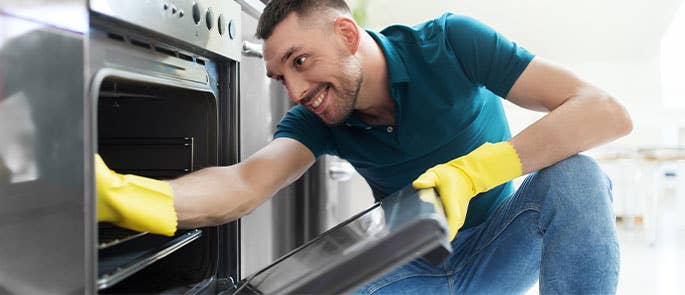
Oven Cleaning Hacks
Check out our top oven cleaning hacks to help you get the most out of your appliance, minimise the build-up of grease and stay safe whilst cleaning your oven in the future:
- Keep on top of spills and food debris by cleaning them up each time you use the oven. This will prevent foods from becoming burnt-on and hard to remove later down the line.
- An oven liner or tray at the bottom of the oven can catch drips and spills, making cleaning much easier as all you need to do is remove and clean or change the liner.
- Where possible, remember to cover foods with foil or a lid when cooking them in the oven as this will help to prevent splatters and spills.
- Stay safe when using cleaning chemicals: never mix products together, always wear protective gloves and keep the room well-ventilated whilst cleaning. Oven cleaners are corrosive substances and can cause chemical burns if not handled safely.
- Ensure the oven is completely cool before going in with a cloth to prevent burns or scalds from hot surfaces or steam.
- Use an old toothbrush to scrub the hard-to-reach places inside the oven, ensuring you get into every corner to remove the dirt. A toothbrush is also useful for cleaning the seal around the oven door.
- Most oven temperature knobs and dials are removable – simply pull them off the front of the oven. These can then be soaked and scrubbed in hot, soapy water to remove grease and dirt.
- Use a vacuum cleaner attachment to remove any loose debris at the bottom of the oven before wetting it with a cleaning solution.
Cleaning your oven regularly improves the taste of your food, enhances the oven’s efficiency and ensures you keep on top of food hygiene and safety. Domestic ovens should be cleaned every few months, whilst commercial kitchens require more frequent cleaning to maintain hygiene standards. You can opt to use chemical or natural cleaners to help keep your oven clean and in top working condition.


